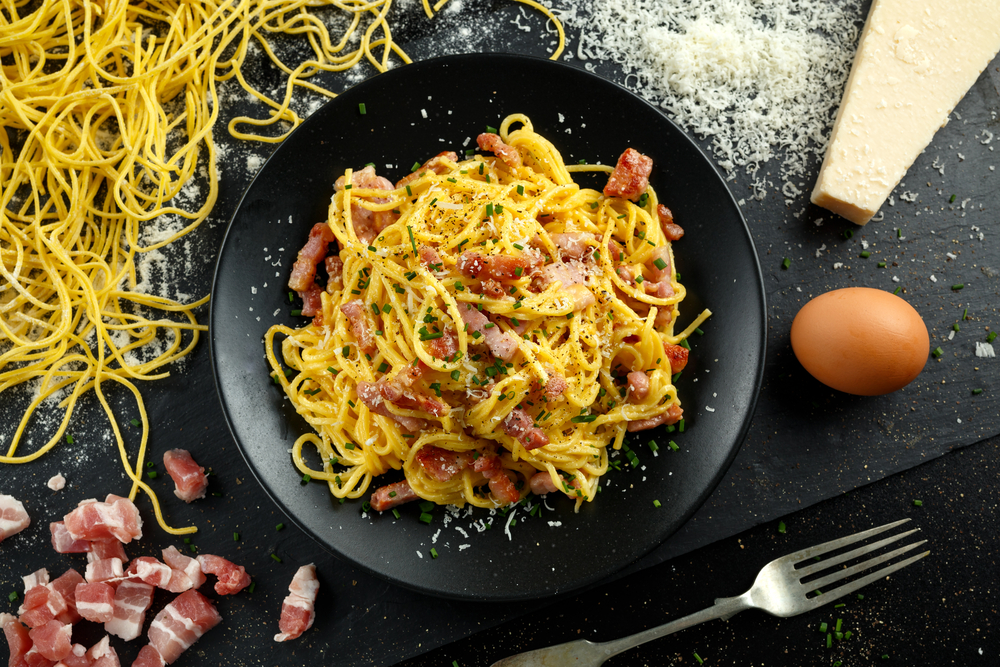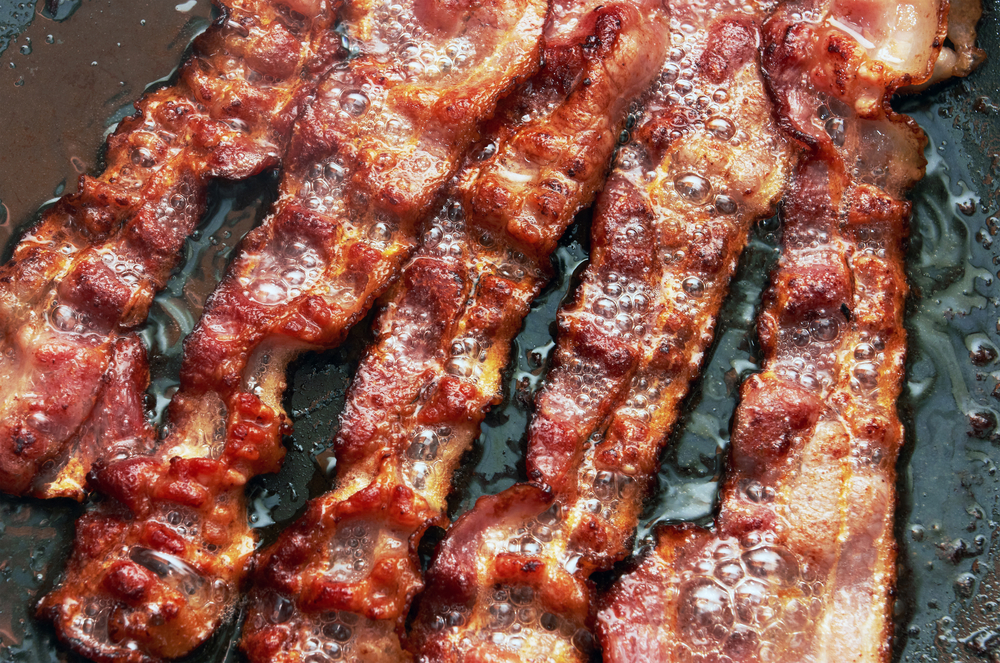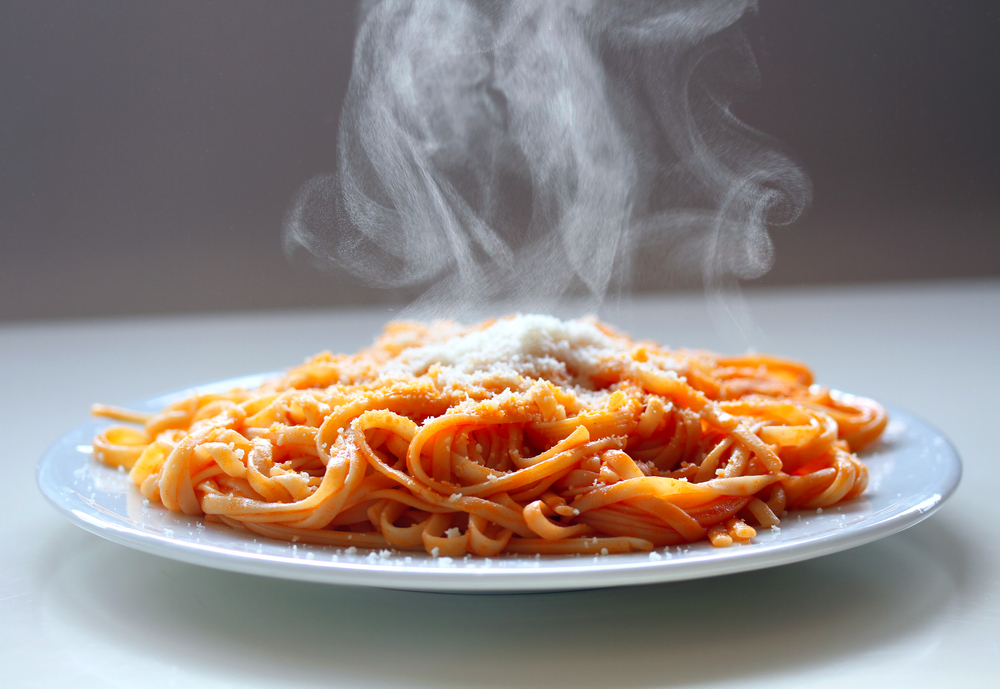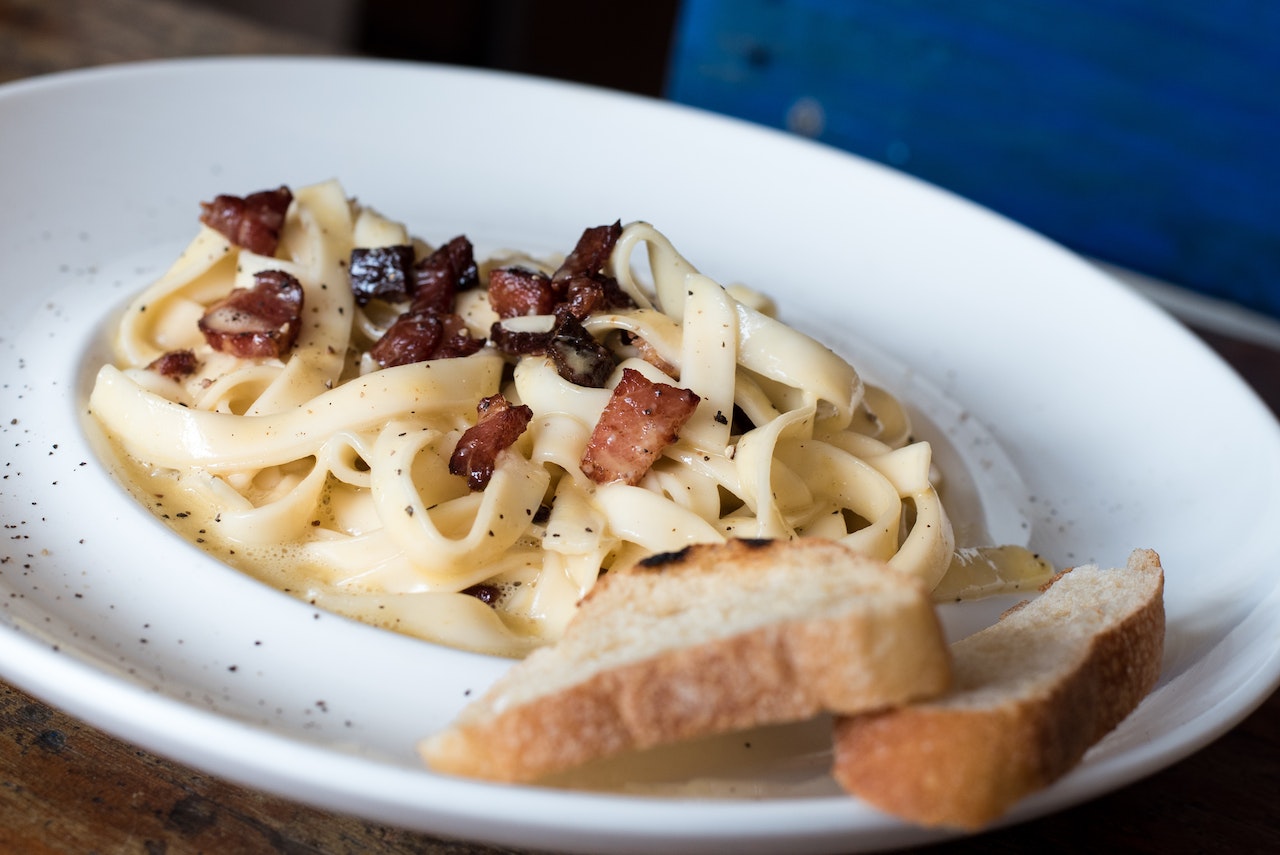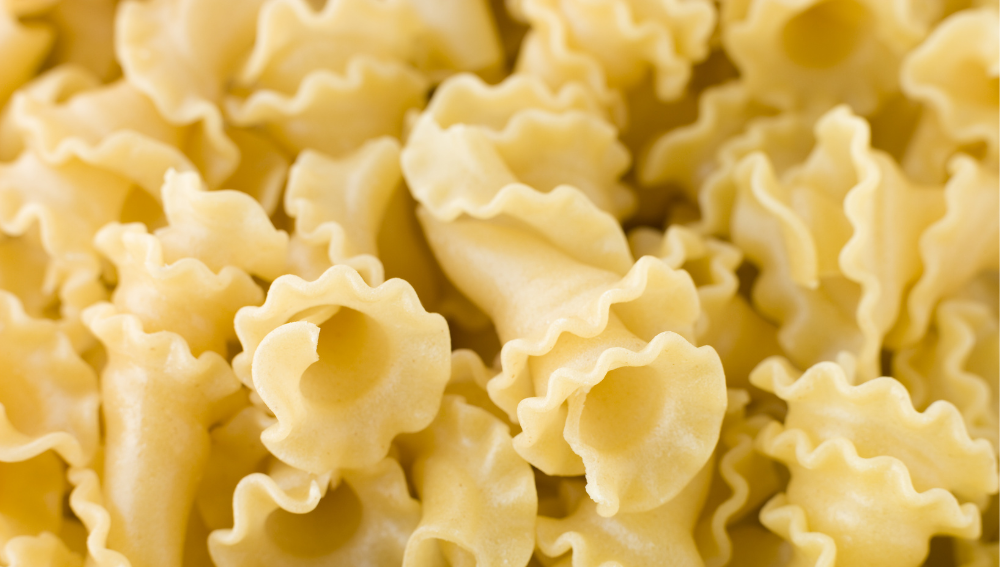As a lover of Italian cuisine, I often find myself with leftover carbonara. However, reheating carbonara can be a tricky process. If not done correctly, the dish can become dry, clumpy, or even unsafe to eat.
In this article, I will share my tips on how to reheat carbonara, so you can enjoy this delicious dish again and again.

Understanding Carbonara is key to reheating it properly. Carbonara is a classic Italian dish made with pasta, eggs, cheese, and bacon. The eggs and cheese create a creamy sauce, while the bacon adds a smoky flavor.
When reheating carbonara, it’s important to keep the sauce creamy and the bacon crispy. By following a few simple steps, you can reheat your carbonara to perfection.
Key Takeaways:
- Allow carbonara to come to room temperature before reheating to ensure even heating.
- Reheat carbonara on the stove or in the oven to maintain the creamy texture.
- Garnish with fresh herbs and grated cheese to enhance the flavor of reheated carbonara.
Understanding Carbonara
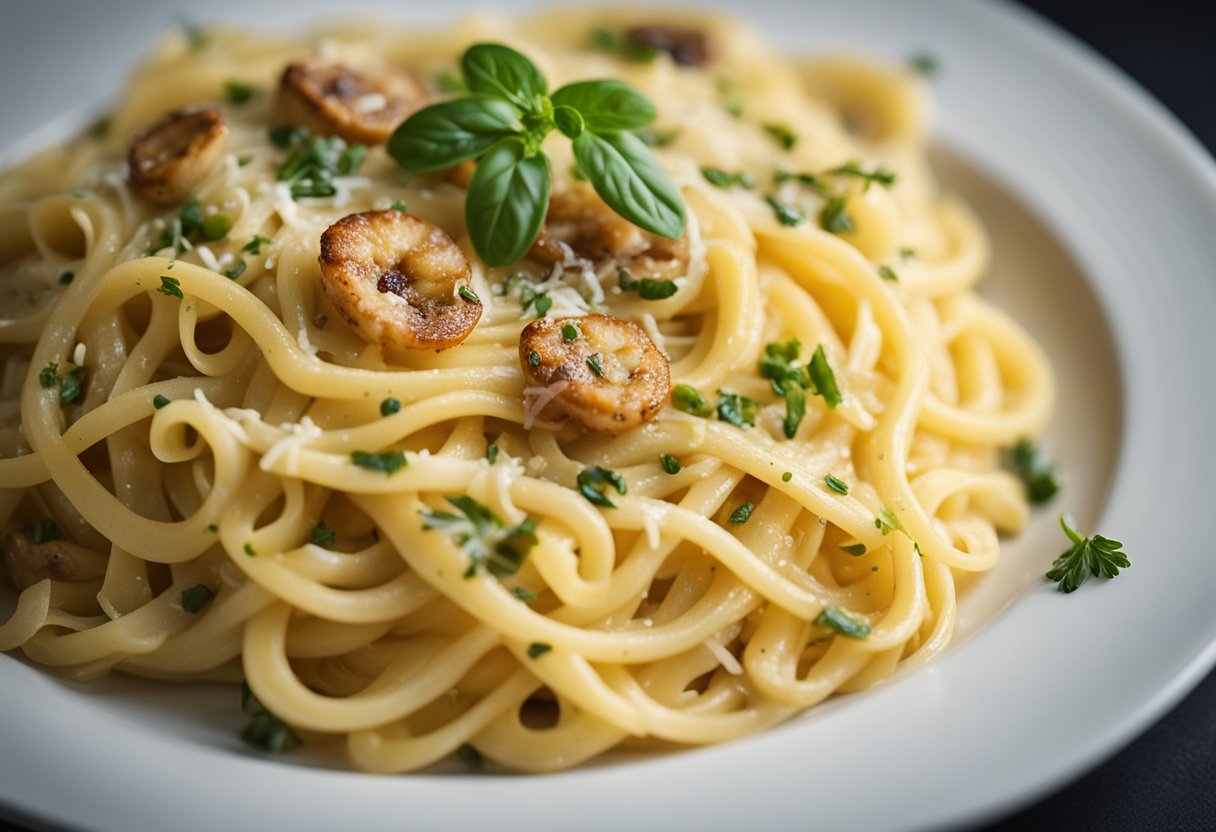
As an Italian dish, carbonara is a popular pasta dish that has been enjoyed for generations. In this section, I will discuss the ingredients of carbonara, its texture and taste, as well as its origin and history.
Ingredients of Carbonara
Carbonara is typically made with noodles, bacon or pancetta, eggs, cheese, black pepper, and parsley. The noodles used in carbonara are usually spaghetti or fettuccine, cooked al dente.
The bacon or pancetta is usually diced and cooked until crispy.
The eggs are beaten together with cheese, usually parmesan or pecorino romano, to create a creamy texture. Black pepper is added for a savory taste, and parsley is sprinkled on top for added flavor.
Texture and Taste
Carbonara is known for its creamy texture and savory taste. The noodles are cooked al dente, which means they are firm to the bite.
The creamy texture of the sauce comes from the eggs and cheese mixture, which is added to the noodles and bacon or pancetta.
The black pepper adds a subtle spiciness to the dish, while the parsley adds a fresh, herbaceous flavor. Overall, carbonara is a rich and satisfying dish that is perfect for a hearty meal.
Origin and History
The origin of carbonara is somewhat debated, but it is believed to have originated in Italy, specifically in the Lazio region.
Some say that it was created by charcoal workers who used bacon and eggs to create a hearty meal while working in the mines.
Others believe that it was created by Italian chefs who were inspired by the American dish, bacon and eggs. Regardless of its origin, carbonara has become a staple Italian dish that is enjoyed around the world.
In conclusion, carbonara is a delicious and satisfying pasta dish that has been enjoyed for generations. Its ingredients, texture, and taste make it a classic Italian dish that is perfect for any occasion.
Storing Leftover Carbonara
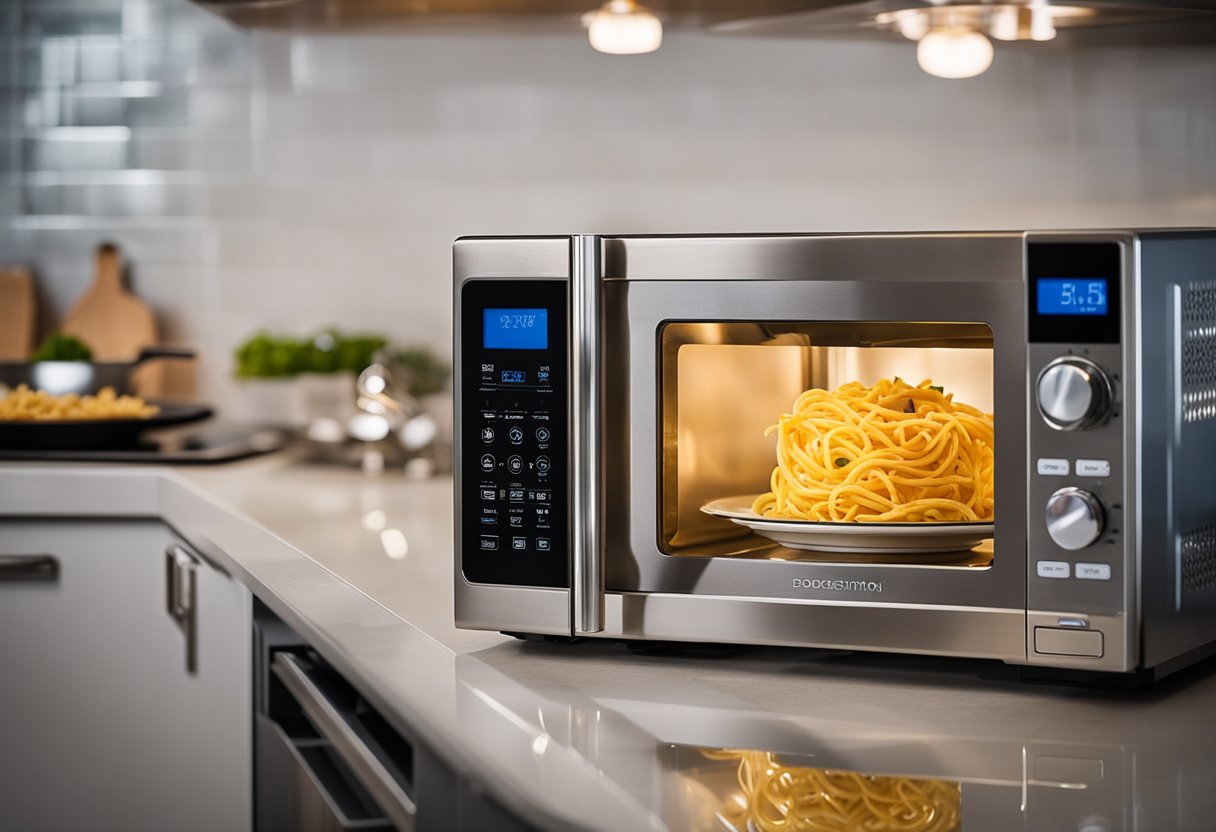
When it comes to storing leftover carbonara, it is important to take proper precautions to prevent bacterial growth and ensure that it remains safe to eat. There are two main methods for storing leftover carbonara: refrigeration and freezing.
Refrigeration
If you plan to eat your leftover carbonara within a few days, storing it in the refrigerator is the best option. To store leftover carbonara in the refrigerator, follow these steps:
- Allow the carbonara to cool to room temperature before storing it.
- Transfer the carbonara to an airtight container.
- Label the container with the date it was prepared.
- Store the container in the refrigerator.
When stored in the refrigerator, leftover carbonara can last for up to four days. It is important to note that the longer the carbonara is stored, the higher the risk of bacterial growth.
Therefore, it is recommended to consume the leftovers as soon as possible.
Freezing
If you do not plan to eat your leftover carbonara within a few days, freezing it is the best option. To store leftover carbonara in the freezer, follow these steps:
- Allow the carbonara to cool to room temperature before storing it.
- Transfer the carbonara to an airtight container or freezer bag.
- Label the container or bag with the date it was prepared.
- Store the container or bag in the freezer.
When stored in the freezer, leftover carbonara can last for up to three months. However, it is important to note that freezing can affect the texture and quality of the carbonara.
To prevent freezer burn, make sure to remove as much air as possible from the container or bag before storing it in the freezer.
Overall, it is important to store leftover carbonara properly to prevent bacterial growth and ensure that it remains safe to eat. By following these simple steps, you can store leftover carbonara with confidence and enjoy it at a later time.
Preparation Before Reheating
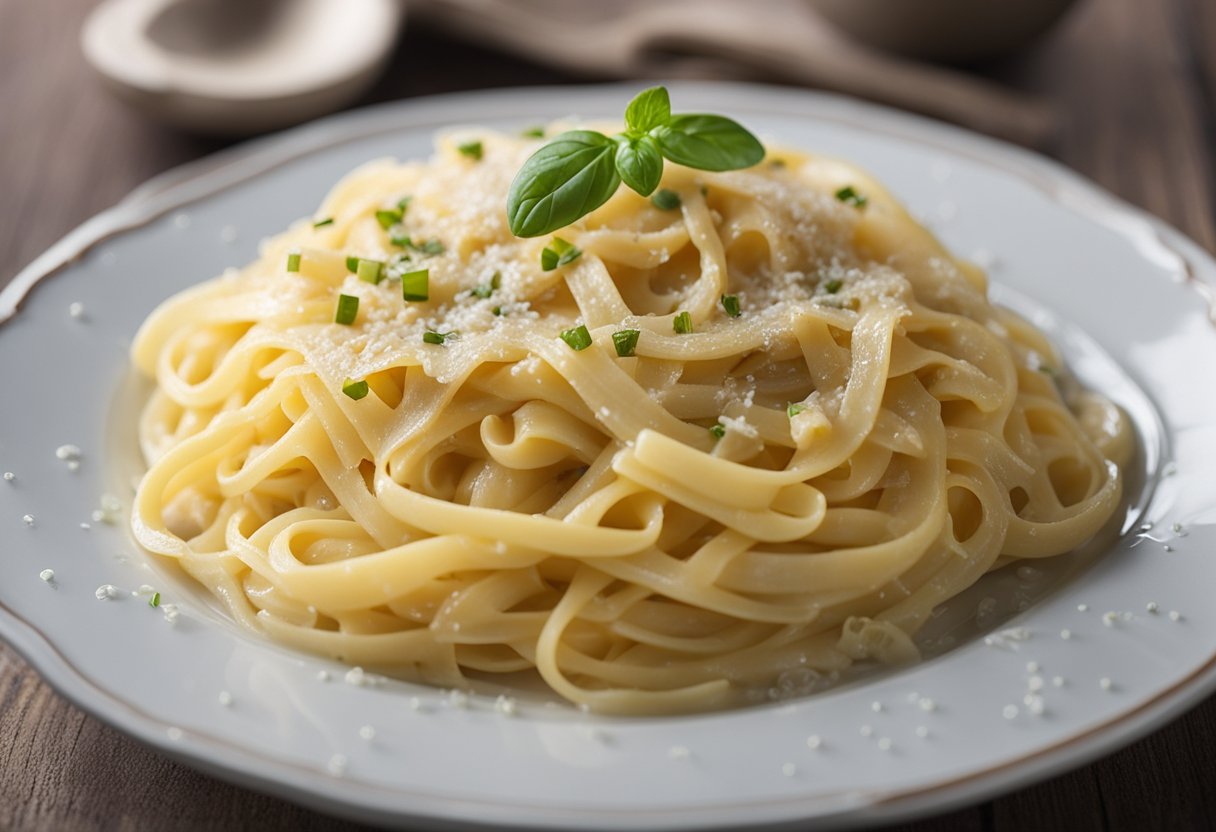
Before reheating carbonara, there are a few things you need to do to ensure that it comes out just as delicious as the day you made it.
In this section, I’ll go over the two main things you need to do before reheating: thawing and separating ingredients.
Thawing
If your carbonara is frozen, you’ll need to thaw it before reheating. The best way to do this is to move it from the freezer to the refrigerator and let it thaw overnight.
If you’re in a hurry, you can also thaw it on the counter at room temperature, but be sure to keep it in a sealed container to prevent contamination.
Separating Ingredients
To ensure that your carbonara reheats evenly, it’s important to separate the pasta and sauce before storing it in the fridge or freezer. This will also prevent the pasta from getting mushy or overcooked.
To do this, let the pasta and sauce cool down to room temperature. Then, transfer the pasta to one container and the sauce to another. Be sure to label each container with the date and contents.
If you don’t have separate containers, you can also use a large resealable bag. Simply place the pasta in one half of the bag and the sauce in the other half. Seal the bag and store it in the fridge or freezer until you’re ready to reheat.
By following these simple steps, you’ll be well on your way to reheating delicious carbonara that’s just as good as the day you made it.
Reheating Carbonara
When it comes to reheating carbonara, there are a few methods you can choose from depending on your preferences and the tools you have available.
In this section, I will go over four different ways to reheat carbonara: using a stove, using a microwave, using an oven, and using the sous vide method.
Using a Stove
Reheating carbonara on a stovetop is one of the best ways to ensure even heating without overcooking the pasta. Here’s how to do it:
- Remove the carbonara from the fridge and let it sit at room temperature for a few minutes.
- Put a non-stick pan, skillet, or saucepan on low heat and add a teaspoon of olive oil or water/cream to prevent sticking.
- Add the carbonara to the pan and stir occasionally for about 5 minutes until heated through.
Using a Microwave
If you’re short on time, reheating carbonara in the microwave is a quick and easy option. Here’s how to do it:
- Transfer the carbonara to a microwave-safe container or bowl.
- Cover the container with plastic wrap or a damp paper towel to prevent splatters and ensure even heating.
- Microwave the carbonara on a low temperature setting in 5-10 second blasts, checking after each blast until it reaches your desired temperature.
Using an Oven
Reheating carbonara in the oven is a great option if you want to avoid using the stove or microwave. Here’s how to do it:
- Preheat your oven to 350°F.
- Transfer the carbonara to an oven-safe dish or wrap it in foil.
- Place the dish or foil-wrapped carbonara in the oven and bake for about 10-15 minutes until heated through.
Using Sous Vide Method
Sous vide is a cooking technique that involves sealing food in a plastic bag and cooking it in a water bath at a precise temperature.
While it may not be the most common way to reheat carbonara, it can be a great option for achieving even heating. Here’s how to do it:
- Preheat your sous vide machine to 145°F.
- Transfer the carbonara to a plastic bag and seal it.
- Place the bag in the water bath and cook for about 30-45 minutes until heated through.
No matter which method you choose, be sure to monitor the internal temperature of the carbonara to ensure it reaches a safe temperature of 165°F.
With these tips, you can enjoy reheated carbonara that tastes just as good as the first time around.
Ensuring Quality and Safety
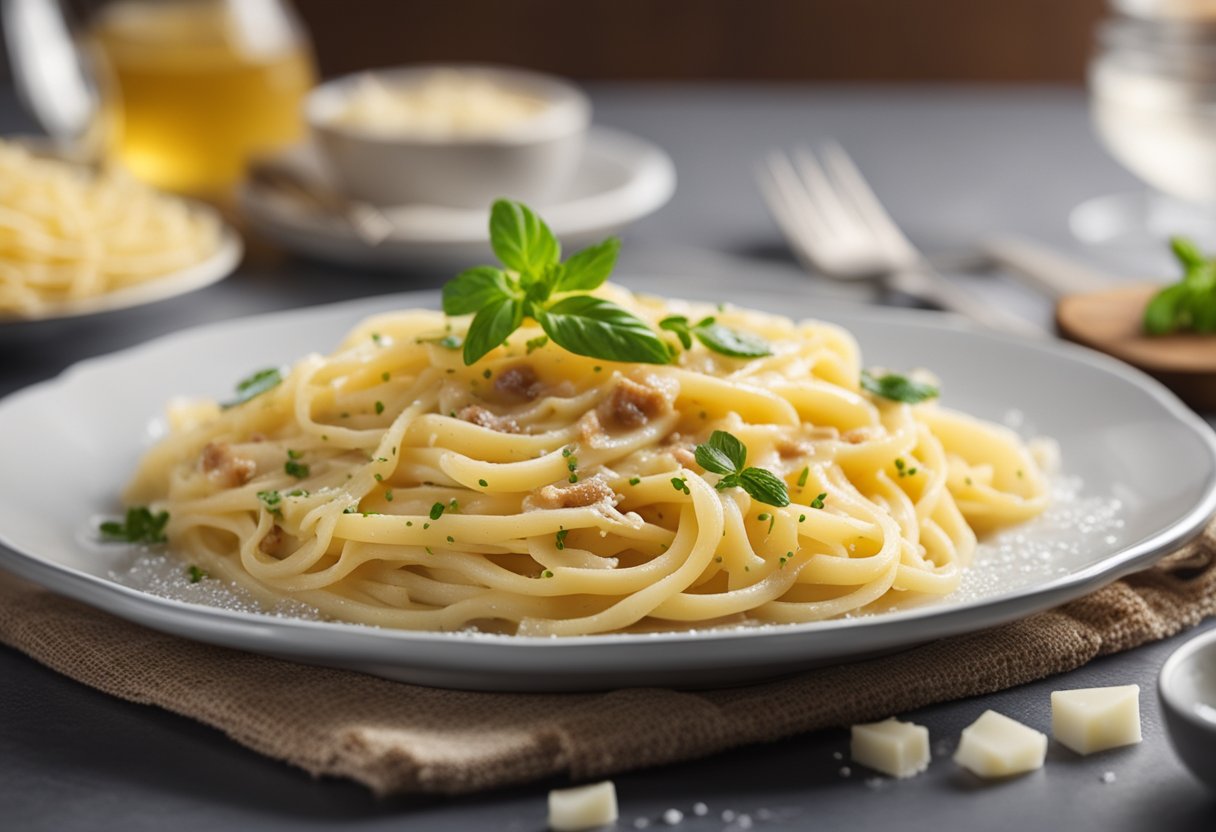
When reheating carbonara, it is important to ensure both quality and safety. Here are some tips to help you avoid overcooking, maintain creaminess, and prevent bacterial growth.
Avoiding Overcooking
To avoid overcooking your carbonara, it is important to reheat it slowly and gently. If you are reheating on the stove, use low to medium heat and stir frequently.
If you are using a microwave, heat in short bursts, stirring in between, until the desired temperature is reached.
It is also important to avoid overheating the carbonara, as this can cause the sauce to separate and become oily.
To prevent this, stop heating the carbonara as soon as it is hot enough and stir in a little water or milk to help it maintain its creamy texture.
Maintaining Creaminess
To maintain the creamy texture of your carbonara, it is important to reheat it slowly and gently. If the sauce is too thick, you can add a little water or milk to thin it out.
Be sure to stir constantly to prevent the sauce from becoming lumpy.
When reheating carbonara, it is important to avoid overcooking the pasta. To achieve the perfect al dente texture, reheat the pasta separately from the sauce and then combine the two just before serving.
Preventing Bacterial Growth
To prevent bacterial growth, it is important to store your leftover carbonara properly. If you are not planning to eat it right away, store it in an airtight container in the refrigerator or freezer.
Be sure to reheat it to the appropriate temperature before eating.
When reheating carbonara, it is important to bring it to a temperature of at least 165°F to kill any potential bacteria.
To ensure that the carbonara is evenly heated, stir frequently and use a meat thermometer to check the temperature.
By following these tips, you can ensure that your reheated carbonara is both safe and delicious.
Serving and Garnishing Reheated Carbonara
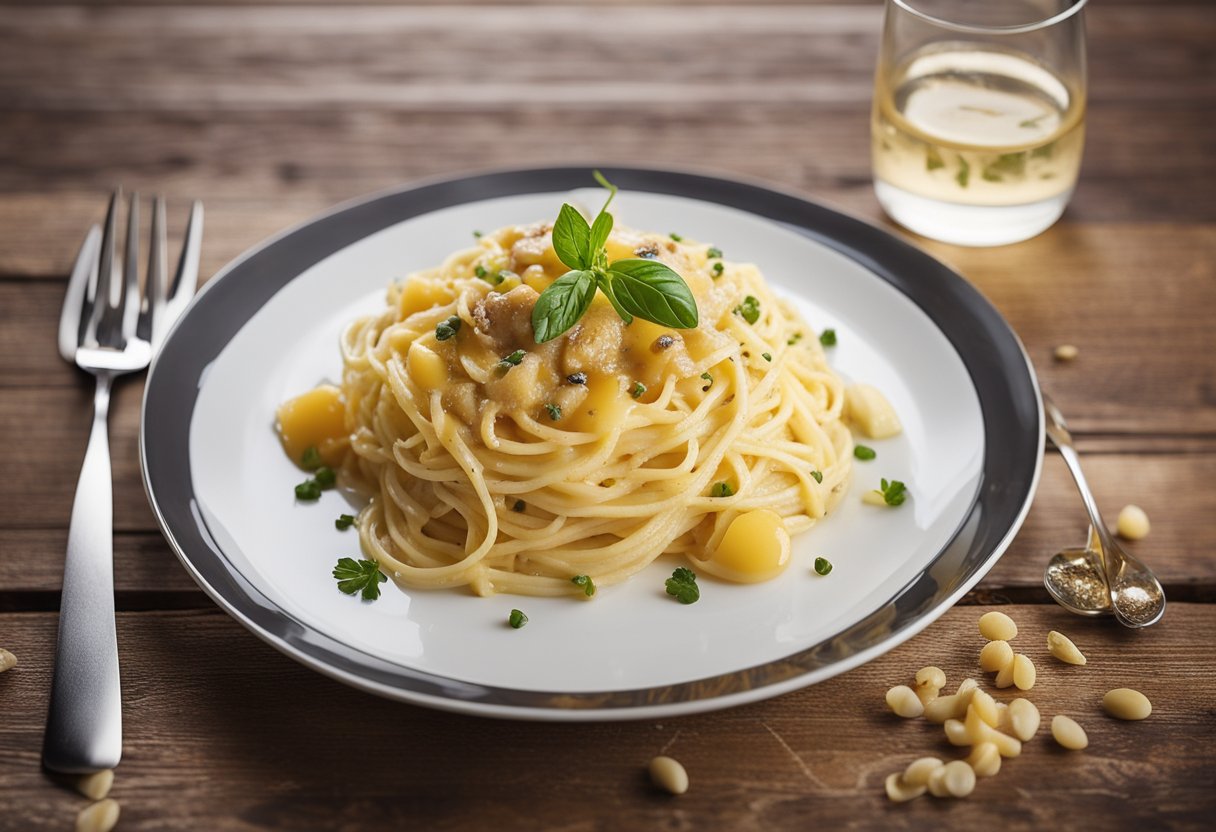
When it comes to reheating carbonara, it’s not just about making sure it’s heated through. You also want it to look and taste as good as it did when it was first made. Here are some tips on how to serve and garnish reheated carbonara.
Garnishing Tips
Garnishing your reheated carbonara can add a pop of color and flavor that takes it to the next level. Here are some ideas for garnishing your carbonara:
- Parsley: Chopped fresh parsley adds a bright, fresh flavor to carbonara and makes it look more visually appealing.
- Parmesan: A sprinkle of freshly grated parmesan cheese on top of the carbonara adds a nutty, salty flavor that complements the creamy sauce.
- Black Pepper: A pinch of freshly ground black pepper adds a subtle kick of heat and a nice contrast to the creamy sauce.
- Herbs and Spices: Experiment with other herbs and spices such as thyme, oregano, or red pepper flakes to add different flavors and textures to your carbonara.
Serving Suggestions
When serving reheated carbonara, portion control is key. You don’t want to serve too much or too little. Here are some tips on how to serve your reheated carbonara:
- Fresh Ingredients: Use fresh ingredients whenever possible. This will ensure that your carbonara tastes as good as possible.
- Frittata: If you have leftover carbonara, consider using it to make a frittata. Simply mix the carbonara with some beaten eggs and cook it in a skillet until set. This is a great way to use up leftovers and create a new dish at the same time.
- Portion Control: Serve the carbonara in small portions. Carbonara is a rich dish, and a little goes a long way. Serve it with a side salad or some roasted vegetables to balance out the meal.
By following these tips, you can make sure that your reheated carbonara looks and tastes great. Experiment with different garnishes and serving suggestions to find the combination that works best for you.
Frequently Asked Questions
How long should you reheat carbonara in the microwave?
When reheating carbonara in the microwave, it is best to do it in short intervals of 30 seconds to 1 minute.
This will help prevent the pasta from drying out or becoming overcooked. Be sure to stir the pasta in between intervals to ensure even heating.
How can you tell if carbonara has gone bad?
If carbonara has gone bad, it will have a sour or rancid smell. You may also notice mold or discoloration on the pasta. It is important to discard any pasta that has gone bad to avoid food poisoning.
What is the best way to reheat leftover carbonara?
The best way to reheat leftover carbonara is on the stove. Heat a small amount of oil or butter in a pan over medium heat. Add the pasta and stir until it is heated through. You can also reheat carbonara in the oven or in a double boiler.
Is it safe to reheat carbonara?
Yes, it is safe to reheat carbonara as long as it is done properly. Be sure to store the pasta in an airtight container in the refrigerator and reheat it to an internal temperature of at least 165°F (74°C) to kill any bacteria.
Can you reheat carbonara with egg yolk?
Yes, you can reheat carbonara with egg yolk. However, it is important to reheat it slowly and at a low temperature to avoid curdling the egg yolk.
Can you eat carbonara the next day?
Yes, you can eat carbonara the next day as long as it has been stored properly in the refrigerator. Be sure to reheat it to an internal temperature of at least 165°F (74°C) before eating to ensure it is safe to consume.


